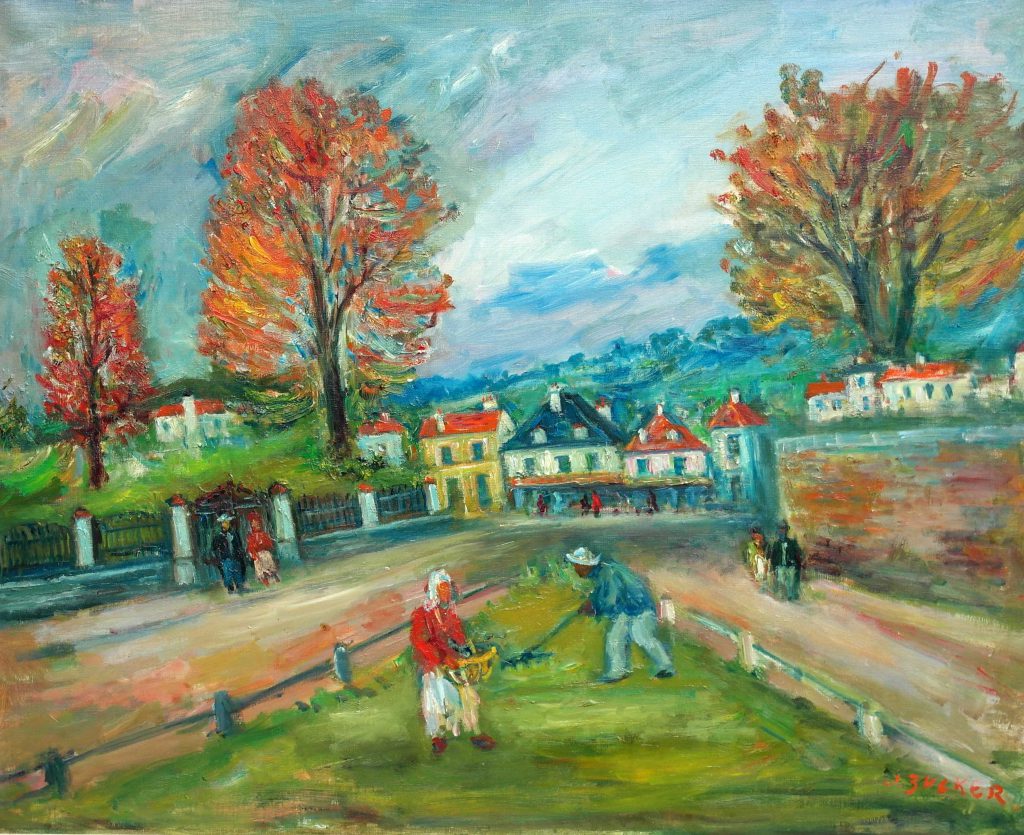Jacques Zucker
Jacques Zucker was born in 1900 in Radom, Poland. He was a notably famous Jewish American artist mostly known for his expressionist figure paintings. In his young years he traveled to Palestine to study fine arts at the Bezalel Art School in Jerusalem. In 1917 he joined the British Royal Fuesiliers under the leadership of General Allenby to liberate Palestine from the Turks. After the first World War he settled in Paris, where he continued his studies at Académie Julian and Academie Colarossi. He then emigrated to the United States in 1922 and continued his art studies at the National Academy of Design. He supported himself by designing jewelry.
In 1925 he returned to Paris and studied at the Academie de la Grande Chaumier et Colarossi. During the Depression he worked for the WPA. From 1928 he took part in the Paris Salons: Autumn and the Tuileries. His works are expressionistic variations in the type of the Ecole de Paris. As a protégé of both Chaim Soutine and Renoir, hints of their style can be observed in much of his own work. Zucker’s style, that may have been influenced from the art of artists such as Marc Chagall, took pride in being an “internationalist”, standing the art of painting in its highest expression is universal no matter where the canvas was created.
People who respond to quality in art will understand the beauty and meaning, in their own land or in a foreign land, this was his main idea behind his artworks that was exhibited in numerous solo show in leading galleries and museums in New York, Paris, Tel Aviv, and other art centers. Claude Roger-Marx of Figaro Litteraire, dean of French art critics, write a comprehensive study of Zucker’s illustrated with 135 color and black and white plates. He traveled widely, including Italy, Spain, Portugal, Mexico and Israel. From then on Zucker lived alternately in New York and Paris, maintaining homes in both places, and spent considerable time painting in Mexico, Portugal, Greece, and Israel.
Zucker’s post-impressionist works including town and landscapes, still-lives, and portraits, are part of an array of permanent installments in numerous museums and private collections in Tel Aviv, including the Joseph Hirschorn collection in Washington, D. C., the Museum of Modern Art in Paris, and the Bezalel Art Museum in Jerusalem. In 1947 he settled in Arcueil near Paris. Zucker died in 1981 in New York
New York Times artikel (click)
